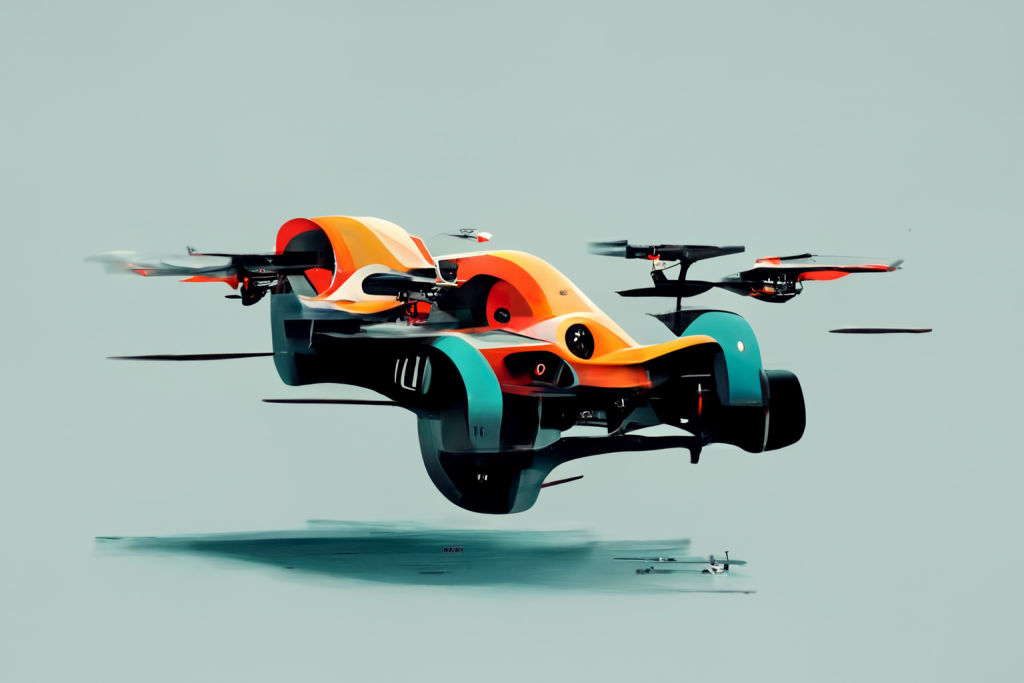Key Features of a Racing Drone:

- Speed: Racing drones are designed to be fast. They typically have high-powered motors and are built to be as lightweight as possible, which allows them to achieve high speeds and manoeuvre quickly.
- Agility: Racing drones are built to be agile and manoeuvrable. They have a high degree of manoeuvrability and can perform acrobatic stunts, such as flips and rolls.
- Durability: Racing drones are designed to be durable, as they are often involved in collisions or crashes during races. They are typically made from materials such as carbon fibre, which is strong and lightweight.
- First-Person View (FPV): Racing drones are flown using FPV, which means that the pilot wears a pair of goggles that allow them to see through the drone’s camera. This provides a more immersive flying experience and allows the pilot to see the drone’s movements in real-time.
- Battery Life: Racing drones have a relatively short battery life due to their high-powered motors and lightweight design. Pilots typically carry multiple batteries with them during races to ensure that they have enough power to complete the race.
How Racing Drones Differ from Other Types of FPV Drones:
- Purpose: Racing drones are built specifically for speed and manoeuvrability, whereas other types of FPV drones, such as cinematic drones or freestyle drones, are designed for different purposes.
- Design: Racing drones have a unique design that sets them apart from other types of drones. They are typically smaller and more compact than other types of FPV drones, which makes them more aerodynamic and easier to manoeuvre.
- Cost: Racing drones can be more expensive than other types of FPV drones due to their specialized design and high-performance components.
- Camera: Racing drones typically have a smaller camera than other types of FPV drones, as they are built for speed rather than capturing high-quality video footage.
- Controller: Racing drones are typically flown using a specialized controller that is designed for racing, whereas other types of FPV drones may use a different type of controller.

Racing drones are a unique type of FPV drone that has been specifically designed for speed and manoeuvrability. They have a range of specialized features and components that set them apart from other types of drones and are particularly popular in the world of competitive drone racing. If you’re interested in getting into racing drones, it’s important to understand their key features and how they differ from other types of FPV drones.

Racing drones are a specific type of drone designed for speed and agility, but how do they compare to other types of drones? In this article, we’ll explore the benefits and drawbacks of racing drones compared to other types of drones.
Benefits of Racing Drones:
- Speed and Agility: Racing drones are designed to be fast and agile, making them ideal for competitive racing. They can reach speeds of up to 100 miles per hour and can make tight turns and manoeuvres that other types of drones cannot.
- Customizability: Racing drones are highly customizable, allowing pilots to adjust components and settings to optimize performance. This means that pilots can fine-tune their drones to their specific needs and preferences.
- Thrilling Experience: Racing drones offer a thrilling experience that is unmatched by other types of drones. The rush of adrenaline and the thrill of competition make racing drones an exciting hobby for many people.

Drawbacks of Racing Drones:
- Fragility: Racing drones are built for speed and agility, which means they are often more fragile than other types of drones. Crashes are common in drone racing, and even minor collisions can damage components or break the frame.
- Limited Flight Time: Racing drones typically have a short flight time of 5-10 minutes, depending on the battery and other factors. This means that pilots need to have multiple batteries on hand for extended racing sessions.
- Learning Curve: Racing drones require a certain level of skill to fly and race effectively. Learning how to pilot a racing drone takes time and practice, and the cost of mistakes can be high.
In conclusion, racing drones offer a unique and exciting experience for pilots who enjoy speed, agility, and competition. While they may have some drawbacks, the benefits of racing drones outweigh the negatives for many enthusiasts. However, for those who are looking for a more relaxed flying experience, other types of drones may be more suitable.

Comments are closed